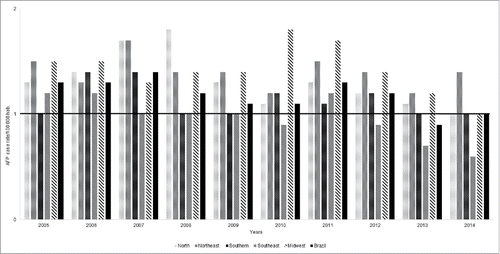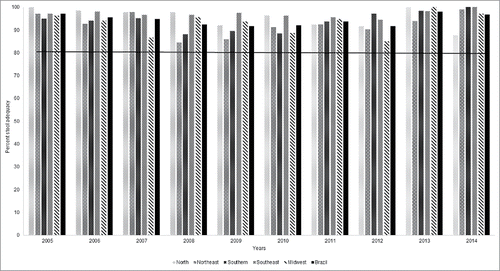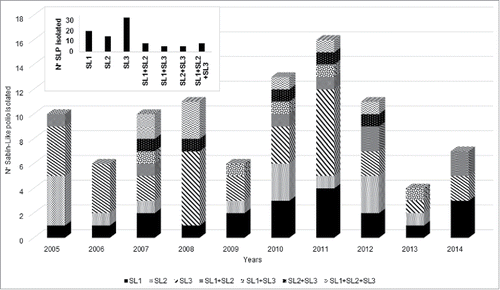Figures & data
Table 1. Acute Flaccid Paralysis (AFP) according to age, gender and region in Brazil, 2005 to 2014.
Figure 1. Annual AFP cases rate for each region in Brazil, 2005–2014. The black line indicates the target recommended by WHO.

Figure 2. Proportion of AFP cases with adequate stool specimens per year of the different regions of Brazil, 2005–2014. The black line indicates the target recommended by WHO.



